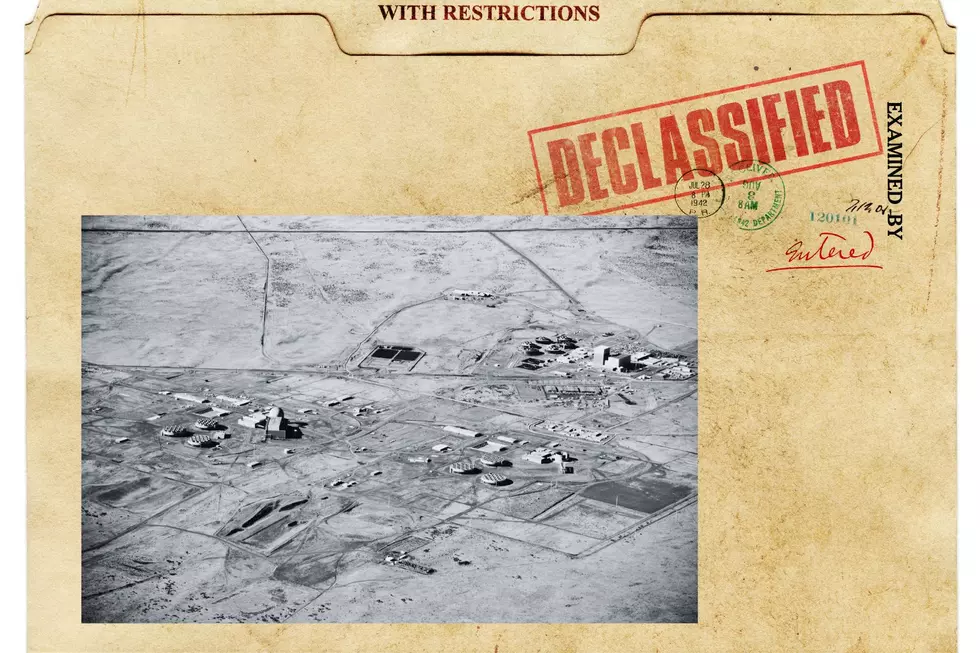
USDA Announces Wildfire Prevention Investments
Earlier this week, the Department of Agriculture announced the first investment of a $1 billion effort to mitigate wildfire risks as the nation faces an ongoing wildfire crisis. USDA announced a $197 million investment for 100 projects that benefit 22 states as part of the Community Wildfire Defense Grant program. The Forest Service worked with states and tribes through an interagency workgroup to develop the Community Wildfire Defense Grant program, originally announced in June. Grant proposals underwent a competitive selection process, including review panels of state forestry agencies and tribal representatives.
Projects receiving funding here in the Pacific Northwest include:
In Washington:
- Clallam County CWPP Update
$125,000 to create a new CWPP that will involve community stakeholder outreach, education, and input; climate change analysis to better predict wildfire risk; extensive hazard risk assessment to identify WUI areas and neighborhoods with vulnerable populations that may face wildfire risk. - Kittitas County Conservation District, Kittitas County Resilient Landscapes
$10,000,000 to a fuels mitigation project that will reduce wildfire risk in Kittitas County while creating more resilient communities and forests in the project area. 92% of requested funds are for on-the-ground fuels work. Projects are driven by the planning efforts of the Washington Department of Natural Resources, the Kittitas Community Wildfire Protection Plan, and the planning efforts of the County Fire Chiefs, the Okanogan-Wenatchee National Forest Cle Elum Ranger District, the SE Region of Washington Department of Natural Resources, and the Kittitas Fire Adapted Communities Coalition. - Mt. Adams Resource Stewards, West Klickitat County Wildfire Defense Project
$5,518,518 to construct of approximately 35 miles (1744 acres) of strategic fuel breaks around 7 high-risk rural communities, paired with a robust outreach and assistance program that will directly serve community members over 5 years. - Spokane County Fire District #4 CWPP Implementation
$1,417,500 carry out the mitigation measures present in the Spokane County Wildfire Preparedness Plan conducted in January 2014. Spokane County Fire District #4 intends to establish two new Firewise communities during the grant timeline, to complete hazardous fuel reduction and mitigation programs. The total number of acres planned to be treated over the course of five years is 500 acres along with other measures listed in the Spokane County CWPP over the next five years. - Washington State Department of Natural Resources, White Salmon Hazardous Fuels Reduction Project
$436,500 to conduct Hazardous Fuels Reduction that will help to mitigate wildfire risk by creating an approximate 100-200foot wide, 100-acre fuel break around the entire community and allowing for some community hazardous fuels reduction in areas mentioned in the 2018 Klickitat County Community Wildfire Protection Plan. - Flowery Trail Community Association, Hazardous Fuel Mitigation
$65,126 creating a 200ft wide shaded fuel break which would completely surround the 150 acres of the development. This area would have yearly maintenance and the rest of the acreage would receive a planting of Western Larch and Ponderosa Pine seedlings, returning wildland fire friendly trees to the area. By taking these actions, which include fuel mitigation, increasing the shaded fuel breaks, requiring home hardiness, and compliance with proper landscaping following the Firewise USA guidelines, the community would be well prepared to survive a wildland fire. - Lincoln County Conservation District, Lincoln County CWPP Update
$66,446 the update will build upon the previous Community Wildfire Protection Plan to identify high-risk areas and recommend specific projects that may help prevent wildland fires from occurring altogether or, at least, lessen their impact on residents and property in Lincoln County, WA. - Pacific County Emergency Management, Pacific County CWPP Development
$103,000 to create a Community Wildfire Protection Plan (CWPP) developed in collaboration of Federal, State, and local partners and stakeholders in the "Urban Wildland - Interface" of Pacific County. The plan will clearly identify our mission to protect life, property, critical infrastructure, and the environment in the "Urban Wildland interface". This plan will focus on reducing wildfire risks in the landscape of the specific urban interface areas, incorporate the Firewise USA program, and implement large scale fire fuel reduction efforts. - Spokane Fire Department, City of Spokane Hazardous Fuels Reduction
$1,503,000 for fuels reduction treatments on City-owned properties. The second priority will be any adjacent private ownership and or municipal-owned properties. Activities will result in 1,000 acres being thinned, pruned, and disposed of. - Confederated Tribes and Bands of the Yakama Nation, Hazardous Fuels Reduction
$2,700,875 to implement the proactive construction of strategic fuel breaks and wildfire risk mitigation work in Tract D, the southwestern corner of the Yakama Reservation. This project proposes to treat approximately 993 acres of hazardous fuels over a five-year period (2023-2028), utilizing a combination of hand crews, heavy equipment such as masticators, and/or prescribed fire utilizing capacity provided by Tribal Forestry. - Community Firewise Sky Meadows Ranch Hazardous Fuels
$750,000 create fire break lines within the community in order to attempt to minimize damage in the event of a large-scale fire, to remove fuels that will feed a fire, remove trees that encroach into easement roads, and to educate the community on fire wising programs and techniques treating 250 acres over a four-year period. - Spokane City Fire Department - Request 1
$1,503,000 fund Cost Share Fuels reduction treatments of high-priority City properties. These properties are scattered throughout the City of Spokane in 5 to 500-acre parcels. Fuel types within the area consist of overstocked conifer forests of Ponderosa Pines, Douglas fir, and brush depending on slope, shade, and viable water sources. The end result will be the treatment of a minimum acreage of 1,000 acres, divided by five years. Approximately 200 acres will be treated per year. - Washington Department of Natural Resources, DNR SE - Request 1
$420,000 to mitigate wildfire risk for the City of Cle Elum by reducing fuel loadings and canopy bulk densities across 180 acres on private lands throughout the western edge of the City of Cle Elum, WA. - Chelan County Natural Resource Department, Stemilt-Squilchuck Forest Resilience Project
$328,036 to plan and implement 400 acres of mechanical thinning in high priority units across ownerships in the planning area from 2023-2025. Implementing thinning/fuels reduction projects across the Stemilt-Squilchuck landscape that serve to increase the footprint of ongoing work in the area and make a meaningful impact on stand structure.
In Oregon:
- Klamath Watershed Partnership, Chiloquin Wildfire Risk Reduction and Education
$616,404 to implement 165 acres of defensible space treatments over five years; to develop and implement a "Brush Dump" program that encourages and facilitates landowner and neighborhood-conducted defensible space clean-up projects by providing up to two dump trailers for cleanup activities and then hauling brush to the dump; to design, purchase, and deploy a multi-use wildfire education trailer for community education and outreach 7-10 events per year, and a mobile information distribution point during a wildfire as needed; and to build capacity and sustainability within Chiloquin Fire and Rescue through development of a part-time Mitigation Specialist position to coordinate the activities of this project and to plan future projects. - Douglas Electric Cooperative Fuels Treatments, Vegetation Management, and Other Mitigation
$9,151,505 to reduce fuel buildup in high-risk wildfire areas, enhance the utility right-of-way's ability to function as fire breaks, increase forest health, and minimize the probability that Douglas Electric's transmission and distribution system may be the origin or contributing source for the ignition of a fire. Funding from this program will enable DEC to reduce its vegetation management program to a 3-to-4-year cycle while addressing hazard trees (snags and cycle busters) not in the traditional utility space. The DEC service area covers 2200 square miles, and the project will be conducted along 1,275 miles of power lines. - Grant SWCD, Grant County Evacuation Corridor and Fuels Management Project
$9,907,344 to perform Hazardous Fuels reduction on 308 road miles (616 shoulder miles) of County Roads that serve as evacuation routes for residences in need of treatment Additionally, treat 100,000 acres of fine fuels prioritizing areas around communities and pre-commercially thin 2,000 acres. - Oregon Department of Forestry, John Day; Grant County Defensible Space
$681,041 to focus on 300 acres of fuels reduction treatments for Grant County landowners in the WUI, installation of Firewise Communities, & outreach & education in the high-risk communities of John Day, Mt. Vernon, Prairie City, Dayville, Granite, Monument, Canyon City, Long Creek, and Seneca. - Baker County CWPP Update
$246,000 to complete a CWPP update and revision to our current and long-standing Community Wildfire Protection Plan. - Wheeler County of Emergency Management, Wheeler County fire protection roadway shoulder clearing
$992,815 to treat 250 miles of Wheeler County roadside right-of way fuels reduction. This will be accomplished with the purchase and use of a new tractor with 22' boom, mower head attachment, and 50" Mulching Head attachment. This will treat 50 miles per year over the five-year period, for a total of 250 miles, or 1210 acres, total over the five-year period. - Illinois Valley Soil & Water Conservation District, Community Action for Wildfire Resiliency Project
$113,744 to treat areas within highly vulnerable Wildland-Urban Interface (WUI) areas, proximate to federally managed forest lands. The proposed treatment areas range in size from 0.25 to 40 acres and are characterized by a mixture of conifer and hardwood tree species at higher elevations, and intermixed oak/pine woodlands and ceanothus brush fields at lower elevations. The proposed treatments are intended to reduce the likelihood of a wildfire originating from, or traversing, forest lands that would impact or otherwise cause loss and damage to private residences, businesses, and community assets. - Rocky Point Fire and EMS, Rocky Point Urban Interface Community Wildfire Protection Plan
$224,717 to update and implement the Community Wildfire Protection Plan, reduce the risk of wildland fire urban interface, and to reduce fuels where homes and resorts are currently located. - City of Ashland, Community Wildfire Protection Plan Update
$249,700 to rewrite of Ashland’s 2004 Community Wildfire Protection Plan to enable the city to better understand wildfire risk in the built environment, integrate WUI risk reduction projects developed in the past 19 years, wrestle with fire-adapted community issues and capacity limits, address vulnerable population knowledge gaps, and map out and prioritize community initiatives based on extensive public engagement. The CWPP will address the 2021 Oregon State Forest Plan priority issues of climate change, diversity/equity/inclusion/social justice, wildfire mitigation capacity and recovery, forest health, and water quality and quantity. - Curry County Soil and Water Conservation District, Gorse Fuels Treatment to Reduce Catastrophic Wildfire
$1,338,078 to implement hazardous wildfire fuels reduction that has been prioritized in the Curry County Community Wildfire Protection Plan and the Curry County Multi-Jurisdictional Natural Hazards Mitigation Plan. This grant will be used to treat the area and reduce the wildfire risk to multiple communities from an invasive species.
In Idaho:
- Idaho Department of lands, Clark County Roadside Fuel Breaks
$690,000 for implementation of 53 miles roughly 260 acres of right-of-way fuel breaks in an expanse of sagebrush steppe, resulting in improved wildfire protection for the WUI communities (700 residences/structures) of Dubois, Kilgore, Spencer, and Medicine Lodge. - Idaho Firewise Inc, Idaho County CWPP Education Program Support
$193,844 to provide outreach and education to proposed communities in Idaho. Along with promoting Firewise Communities specifically in communities receiving fuels reduction projects to increase accountability and maintenance.
If you have a story idea for the PNW Ag Network, call (509) 547-9791, or e-mail glenn.vaagen@townsquaremedia.com
More From 102.7 KORD





![Would You Bungee Jump Off America’s Tallest Steel Bridge in WA? [VIDEO]](http://townsquare.media/site/112/files/2023/02/attachment-Untitled-design-2023-02-16T104719.580.jpg?w=980&q=75)



